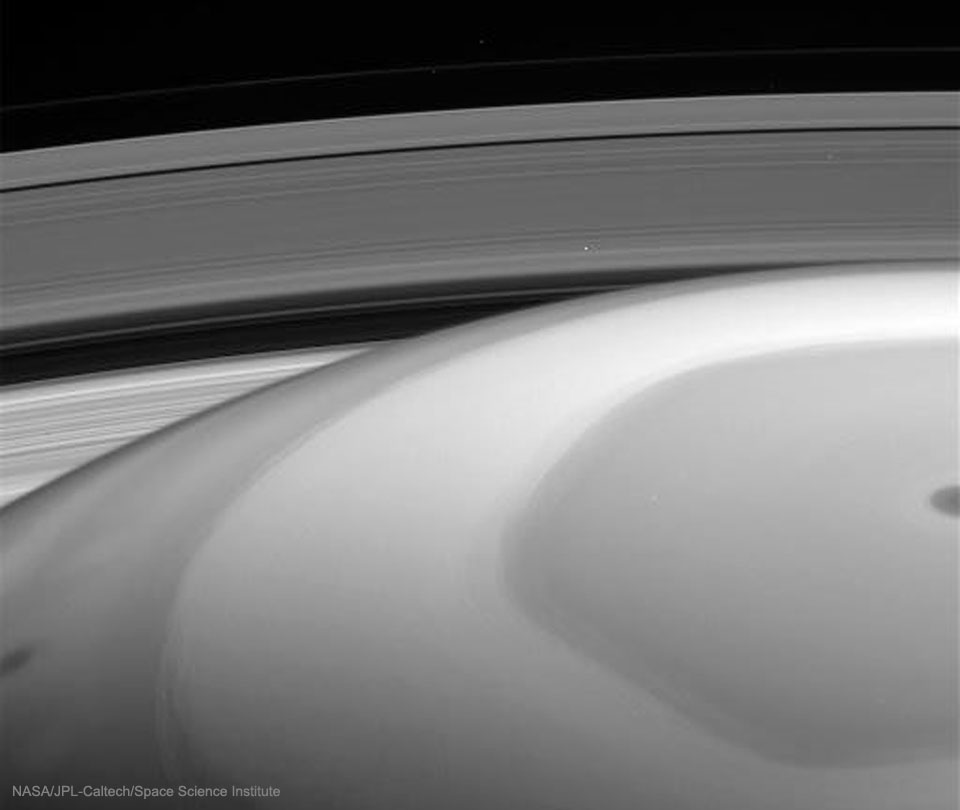穿越土星环面
The planet Saturn is shown as an orange orb with bands. A blue line with bumps runs across the middle — which is the rings seen sideways. The bumps are small moons. Please see the explanation for more detailed information.
图中土星呈现为一个带有条纹的橙色球体。一条带有凸起的蓝色线条横贯其中心——这就是从侧面看到的土星环。这些凸起是土星的小卫星。有关更多详细信息,请参阅说明。










